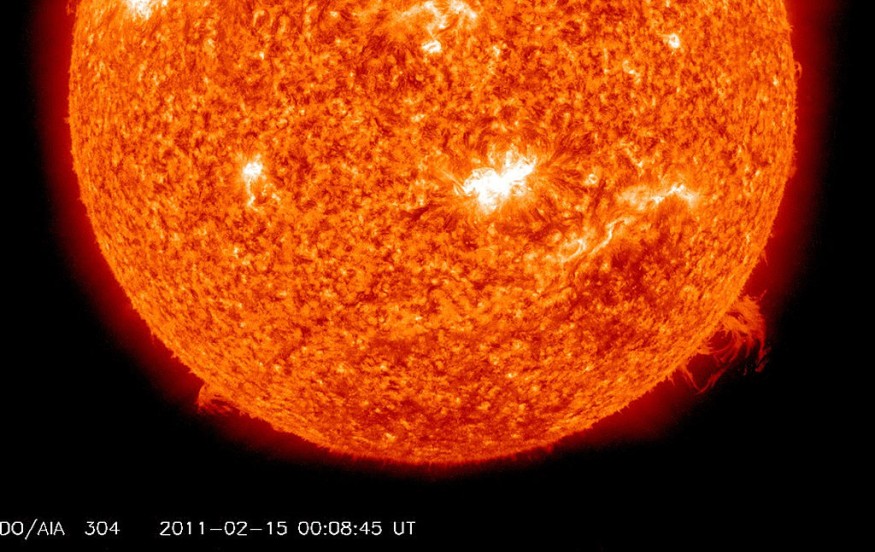The sun is getting more active than ever! In fact, a space photographer just posted a picture of what seems to be the giant star's surface breaking apart due to a large solar prominence. The most recent solar activity resulted in a geomagnetic storm expected to occur on Tuesday.

Sun Experiencing a Solar Prominence
Astrophotographer Sebastian Voltmer posted a picture of the sun's surface feature, which he described as a "huge prominence."
"There is currently a huge prominence visible on the sun. That's impressive, but it was spectacular to see a very fast moving part of it through my small refractor telescope - ejecting and detaching to the side," Voltmer tweeted.
There is currently a huge #prominence visible on the #Sun. That's impressive, but it was spectacular to see a very fast moving part of it through my small refractor telescope - ejecting and detaching to the side.
— Dr. Sebastian Voltmer (@SeVoSpace) July 17, 2022
Images captured through my #Daystar #Quark.@SeVoSpace pic.twitter.com/QQtlH23Xkd
The astrophotographer also posted video footage of the prominence in motion and an explosion of solar debris.
"This huge eruption is 20 times the size of the Earth," he said in the video, which he uploaded on YouTube.
According to the space weather news website spaceweather.com (via Newsweek), the object in the shot "might be coming apart."
On spaceweather.com's Realtime Image Gallery, you may see further solar prominence pictures shot the previous week.
ALSO READ : Solar Flare Results In Geomagnetic Storm That May Cause Power Grid Disruption, Railway Collisions on Earth
Solar Prominences
Large, brilliant loops of plasma-electrically charged hydrogen and helium gas-that stretch from the sun's surface are known as solar prominences. They are occasionally tens of times bigger than the Earth, making them very gigantic.
Even though they can take only a day to produce, solar prominences can be stable enough to last for months while circling hundreds of thousands of kilometers into space and remaining tied to the sun's surface.
Sometimes solar prominences might break apart or collapse completely. According to Space Weather, this phenomenon happens when the magnetic field in their area becomes unstable, such as if a new magnetic field line pokes through the sun's surface underneath the prominence.
The burst of material resulting from the collapse of a solar prominence is known as a Hyder flare after the astronomer Charles Hyder researched these phenomena.
It's crucial to remember that astronomers who photograph solar prominences or any other aspect of the sun do it safely by using specialized filters. According to Sky & Telescope magazine, looking at the sun directly without appropriate protection can burn the eye's retina, leaving a permanent blind spot.
Sun's Increasing Activity
The solar outburst is simply the most recent in a string that has recently jolted the sun. The sun, which operates on an 11-year cycle, is currently in its maximum phase. As a result, there are now more solar outbursts. It increases the likelihood that such solar flares will produce geomagnetics storms toward Earth.
Because the Earth was facing that side of the sun when it erupted, that is what happened with this specific eruption. Unfortunately, it's impossible to predict what kinds of problems the explosion may bring about when it interacts with Earth's magnetic field.
Numerous satellites currently in orbit may have problems due to the high energy content in these solar storms. The remains of a Russian rocket booster fell out of orbit more quickly this year due to a solar storm that struck Earth earlier in the year. Reentering the atmosphere, the rocket left flaming trails in the sky above Montana, BGR reported.
As solar activity continues to rise, we could witness more similar occurrences in the upcoming months.
RELATED ARTICLE : Solar Storm Warning: Flares Are Heading Towards the Earth, Could It Take Down Communications Lines Worldwide?
Check out more news and information on Space in Science Times.












